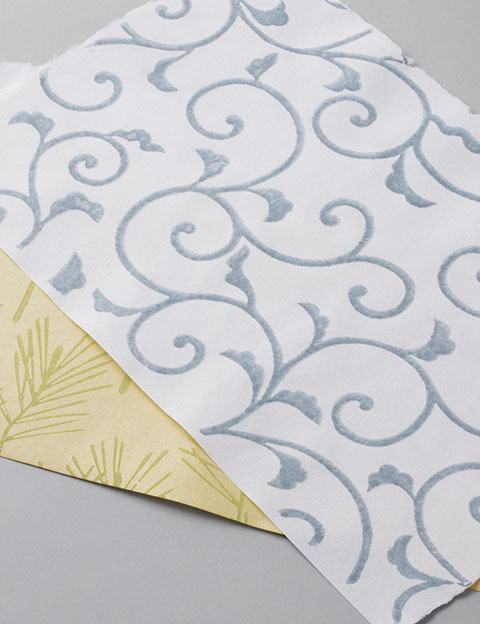EDO Karakami (Decorative Papers)

The origin of Edo decorative paper can be traced back to a type of paper used during the Heian era (794-1185) to write traditional waka poems. However, it was not until the Late Middle Ages that this kind of paper was applied to free-standing shoji screens and sliding fusuma screens, which are used to divide interior spaces.
With the promotion of urban development by the Shogunate during the Edo era (1600-1868), the demand for these items increased and a number of advancements were subsequently made. The importance the craft is illustrated in a late-17th century book on Japanese crafts that depicts Edo paper specialists at work.
The designs on Edo decorative paper are printed using wood blocks, applied with stencils or decorated with gold or silver leaf, and reflect Edo merchant culture through seasonal motifs and depictions of everyday life. The paper is primarily used for shoji and fusuma screens, which are usually translucent. In addition to the more traditional uses, this charming paper can be applied to walls and ceilings to give even modern interiors a more traditional feel.
Feature
Edo decorative paper is used mainly for traditional Japanese sliding doors and folding screens. The designs reflect Edo-era culture and daily life as well as scenes of nature.
How to make
Decorative methods include woodblock printing, painting with persimmon-treated stencils, and applying gold and silver leaf.
Each method has been passed down through generations of craftsmen.

